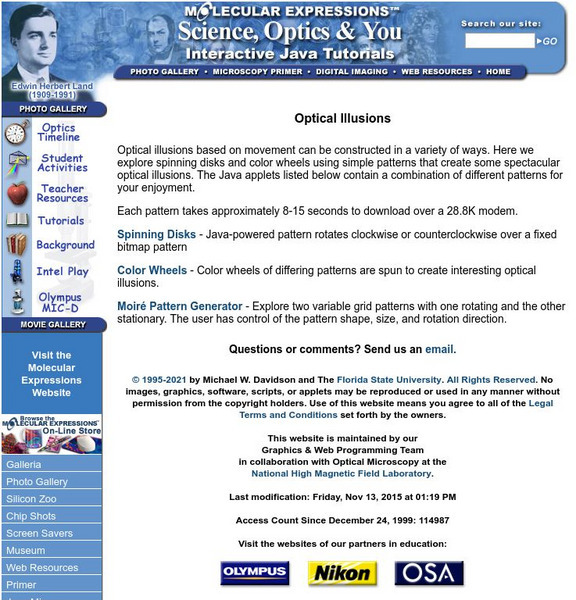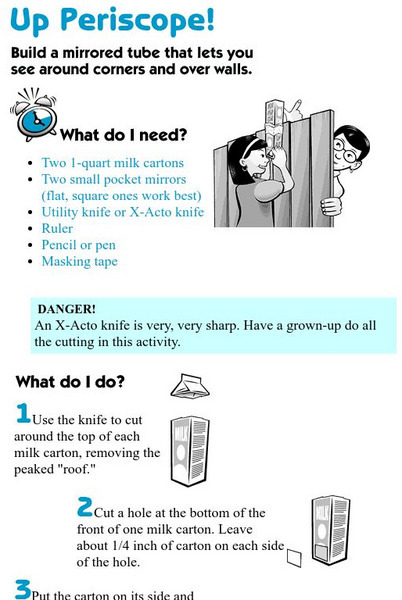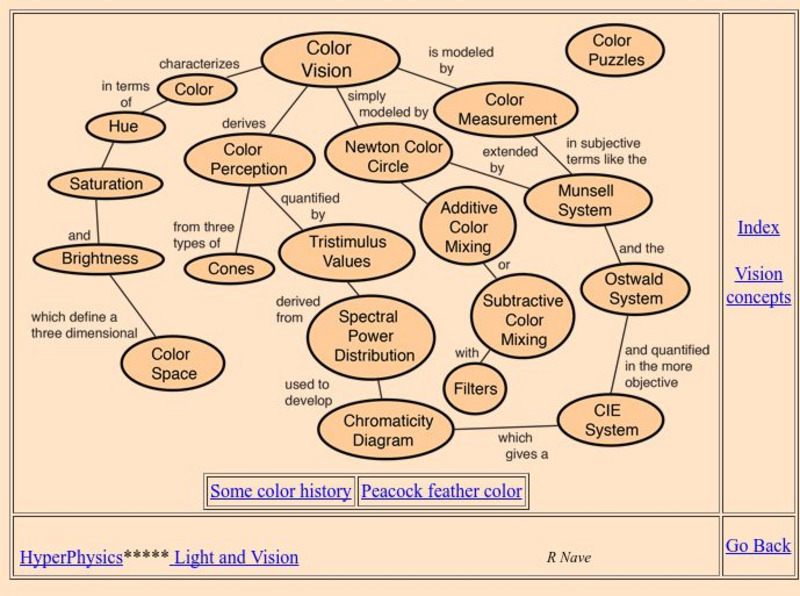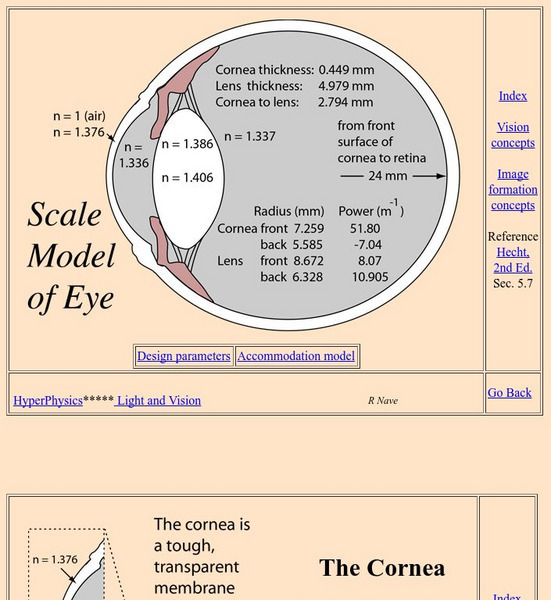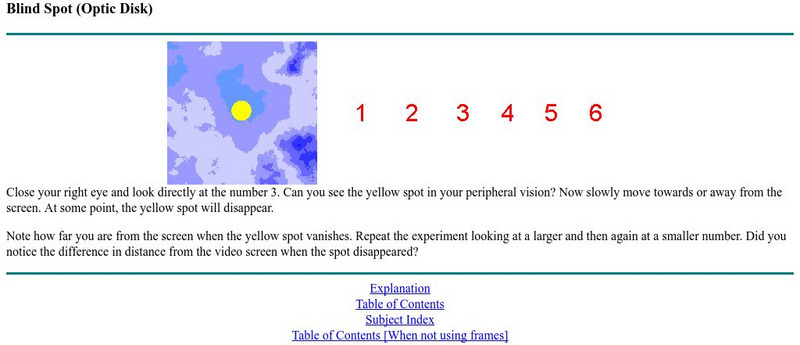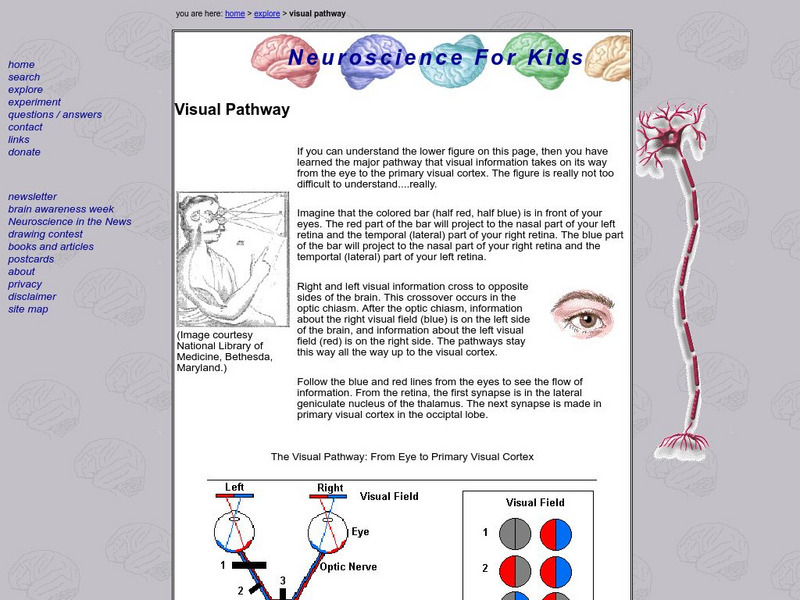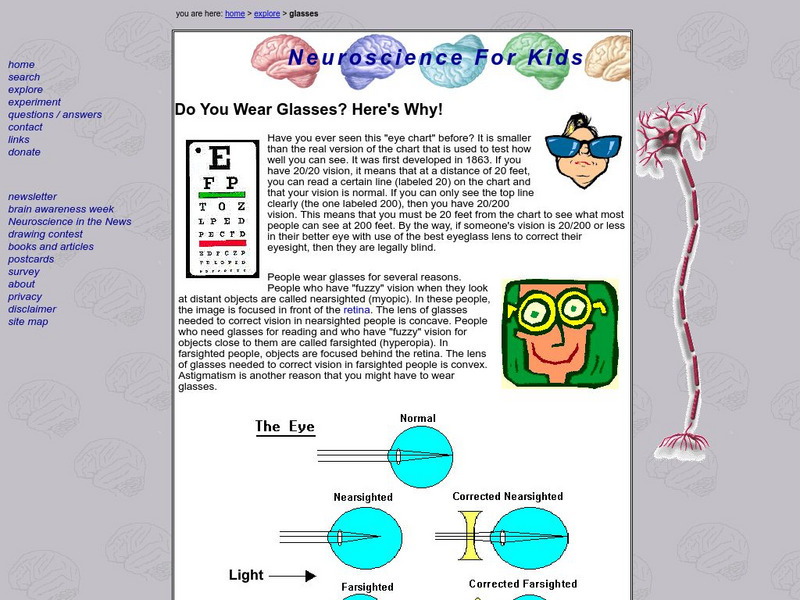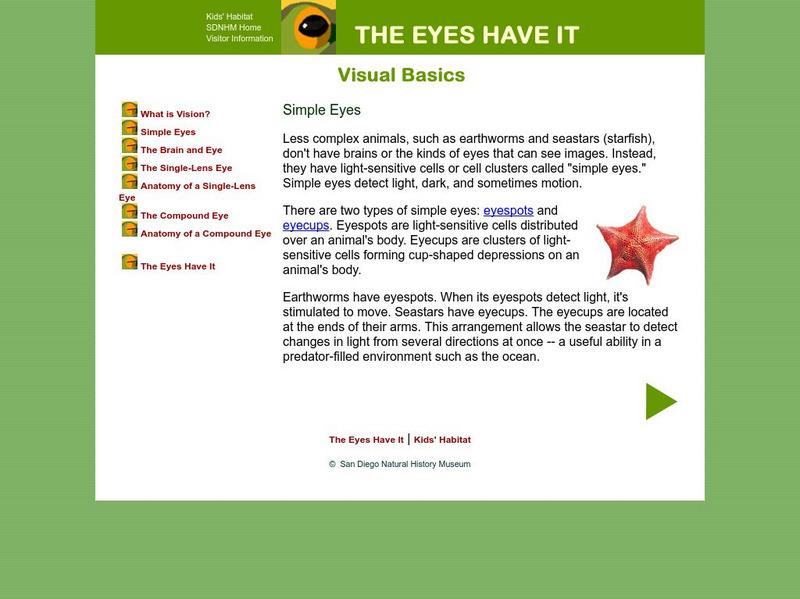Science Buddies
Science Buddies: Now You See It, Now You Don't! Test Your Peripheral Vision
The survival of our ancient ancestors depended on their ability to use peripheral vision to find prey and to avoid predators. Almost everything we do-from riding a bike, to dribbling a basketball, to reading a book-depends on peripheral...
PBS
Pbs Learning Media: Independent Lens: What's Your Calling?: Educator Guide
This educator guide is designed for young adults on the verge of making important life decisions, defining who they are, and determining how to achieve their hopes and dreams. Short film modules and highly customizable lesson plans allow...
American Museum of Natural History
American Museum of Natural History: Optical Illusions and How They Work
What you see and what you think you see are different things. Find out what your brain doing behind-the-scenes!
Biology Pages
Kimball's Biology Pages: The Human Eye
Written by a former author of Biology textbooks, this page describes not only color vision, but the anatomy of the eye, and color blindness. Easy to understand language.
Florida State University
Florida State University: Optical Illusions
A brief informative site on optical illusions. Includes some beautiful examples of optical illusions such as spinning disks, color wheels, and Moire Pattern Generators.
Exploratorium
Exploratorium: Up Periscope!
Children can look around corners with this homemade periscope. Great instructions at this Exploratorium site on how to build a periscope.
Georgia State University
Georgia State University: Hyper Physics: Characterizing Color
This site from Georgia State University discusses the meaning of the terms hue, saturation and brightness. Thorough, meaningful explanations and outstanding graphics.
Georgia State University
Georgia State University: Hyper Physics: Color Vision Concepts
An indexing page from Georgia State University for a variety of other pages associated with color vision. Pages are filled with meaningful graphics and thorough explanations.
Georgia State University
Georgia State University: Hyper Physics: Mirrors in Imaging
A discussion from Georgia State University of different types of mirrors and the images which they create. Discusses different instruments which use mirrors to produce images.
Georgia State University
Georgia State University: Hyper Physics: Scale Model of Human Eye
A scale model of the human eye is shown. Information about the parts of the eye and the common defects that result from its malfunctioning.
Library of Congress
Loc: Poetry 180: Blind
The poem shares the sad experience of seeing a loved one lose the sense of sight.
University of Washington
Neuroscience for Kids: The Eye
Easy to understand description of the parts of the eye and their functions. Lots of labeled illustrations. At the bottom of the page additional content includes games, quizzes, lesson plans and activities about vision.
York University
York University: Blind Spot Test
Take this little test about the blind spot, then click on the red "explanation" button at the bottom of the page to find out what you just experienced.
University of Washington
Neuroscience for Kids: The Retina
A not-too-complicated explanation of vision and rods and cones.
University of Washington
The Senses
This site has a collection of learning activities, games, experiments, and lesson plans on the five senses. Organized by grade level and topic, this site is packed with an assortment of interactive and engaging activities, that would...
University of Washington
University of Washington: Central Visual Pathways
Explore the world of central visual pathways. The visual pathway leads from the eye to the primary visual cortex. There is a detailed visual description of this process. Check it out.
University of Washington
Neuroscience for Kids: Do You Wear Glasses?
Have you ever wondered why you may or may not have to wear glasses? Use this explanation to find out the answer. It outlines the normal eye, the nearsighted eye and the farsighted eye. The diagrams are helpful for a more comprehensive...
University of Washington
Neuroscience for Kids: Eye Safety
Heed the following warning, "Your eyes are the windows to your brain- Protect Them!" Use this website to learn several eye safety tips.
San Diego Natural History Museum
San Diego Natural History: Kids' Habitat :The Eyes Have It Simple Eyes
Earthworms and other simple animals like the starfish have a different eye structure known as a 'simple' eye.Learn about its anatomy and how it functions.
Physics Classroom
The Physics Classroom: Light Waves and Color Table of Contents
Students explore color, vision, and two-point source interference. The tutorial consists of lessons and problems to check for understanding.
Society for Science and the Public
Science News for Students: One Eye, 3 D
Article describes an experiment for viewing images in 3D without the aid of special technology or glasses. Includes a vocabulary list.
TED Talks
Ted: Ted Ed: How Do Glasses Help Us See?
Today, glasses help millions of people with poor vision be able to see clearly. But how? Andrew Bastawrous and Clare Gilbert help unravel the answer by explaining refraction- the ability of a transparent medium, like glass, water, or the...
TED Talks
Ted: Ted Ed: Mary's Room: A Philosophical Thought Experiment
Imagine a neuroscientist who has only ever seen black and white things, but she is an expert in color vision and knows everything about its physics and biology. If, one day, she sees color, does she learn anything new? Is there anything...
Exploratorium
Exploratorium: Shimmer
Student will see this design shimmer! Use this site to learn about this optical illusion and what makes it happen.





